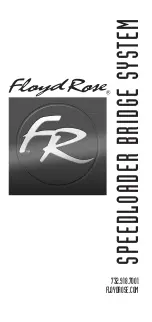
EtherNet/IP interface
59
AMS 358
i
Leuze electronic
9.6
EDS file - general info
An EDS file (Electronic Data Sheet) is provided for the AMS 358
i
.
The EDS file is named "AMS358i.eds"; the corresponding icon is named "AMS358i.ico"
Both files are available in the Download area of the Leuze website: www.leuze.com.
The EDS file contains all identification and communication parameters of the device, as well
as the available objects.
The AMS 358
i
is uniquely classified via a class 1 identity object (component of the
AMS358i.eds file) for the EtherNet/IP scanner (master).
The identity object contains, among other things, a manufacturer-specific vendor ID, as well
as an ID that describes the principle function of the participant.
The AMS 358
i
has the following identity object (class 1):
Vendor ID: 524
Dec
/ 20C
H
Device type: 34
Dec
/ 22
H
(identifies the AMS 358
i
as "encoder")
Position sensor type: 8
Dec
/ 8
H
(specifies the AMS 358
i
as "absolute encoder")
If accepting the objects without change, all parameters are set to default values. The default
settings are shown in the objects described in detail in the "Default" column.
An assembly is activated by default in the EDS file. The assembly automatically communi-
cates its inputs and outputs to the control. Further information on the assemblies can be
found in chapter 9.7.4 and chapter 9.7.8.
Notice!
In the following tables, all attributes marked in the "Access" column with "Get" in the
individual objects are to be understood as inputs of the scanner (control). E.g., "Read position
value" --> Class 35; instance 1; attribute 10.
Attributes marked in the "Access" column with "Set" represent outputs or parameters.
Outputs are set, e.g., "Laser off"--> Class 35; instance 1; attribute 110.
Parameters are also marked with "Set" and are written to the AMS. E.g., "Change of position
format" --> Class 35; instance 1; attribute 15.
The EDS file is described in detail in the following. The access addresses to the individual
objects as well as the default settings of the individual attributes are provided in this
description.
Furthermore, assemblies with predefined inputs and outputs are made available for the
implicit (real-time) communication. A more detailed description of the assemblies can be
found in chapter 9.7.
The EDS file also contains a configuration assembly. Via the configuration assembly, the
parameters of the AMS 358
i
can be stored in the control.
For this purpose, a corresponding memory location must be stored separately in the control
for each participant.
















































